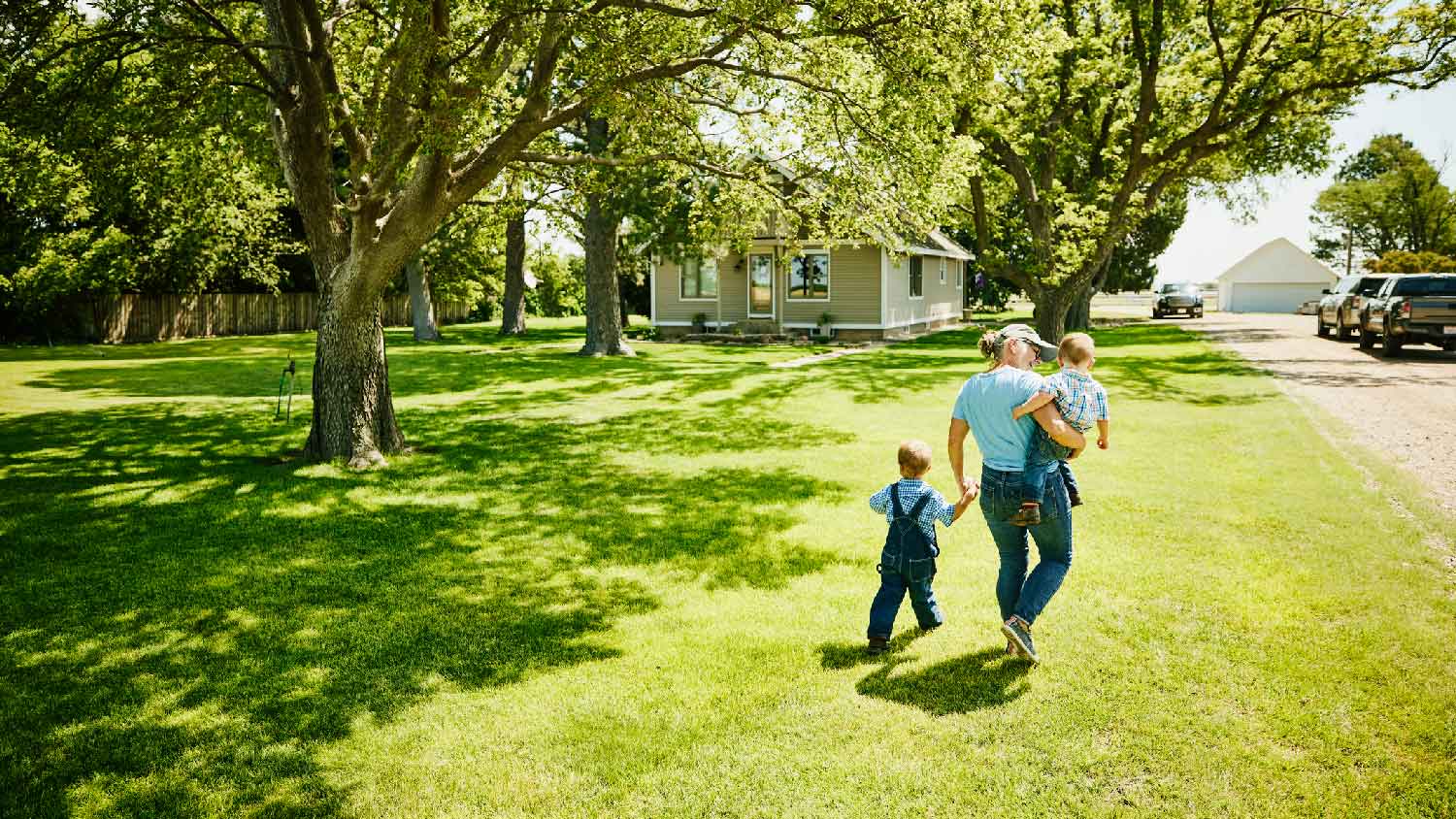
How much it costs to rent a lawn aerator depends on what kind you rent and how long you rent it for. Read on for the full details.
Stop to check the sulfur schedule before adding it to your grass


Sulfur can boost the appearance, strength, and resiliency of your grass.
Add sulfur once or twice a year, at least three weeks apart.
Apply 5 pounds of sulfur for every 1,000 square feet of lawn.
Opt for spring or fall application and when it’s below 80 degrees Fahrenheit.
Applying sulfur to your lawn enriches its growth and can help your grass look green, lush, and full. But how often can you apply sulfur to your lawn?
You can apply sulfur amendments once or twice per year, and it usually takes several applications to reap the full rewards. Learn how often you can apply sulfur to your lawn and the best times to apply it.
You can apply five pounds of sulfur for every 1,000 square feet of lawn up to two times per year, during spring or fall. Wait at least three weeks between sulfur applications. You should apply sulfur to established lawns or to the soil before seeding, using plugs, or laying sod.
Avoid applying more than 10 pounds per 1,000 square feet per year. Adding sulfur amendments beyond this amount can burn the grass. Avoid applying sulfur if you have fruit trees on your property.
If your lawn lacks sulfur, it can turn yellow or pale green. Sulfur deficiency can also lead to weak shoots and patchy growth. Here are the main benefits of using sulfur for grass.
Appears greener and more vibrant
Fosters healthy, dense growth
Increases drought tolerance
Withstands winter and cold temperatures better
Less susceptible to disease, fungi, and lawn pests
Faster recovery from diseases and fungi
Helps heal and eliminate thin patches and brown grass
Reduces the pH of your soil
Applying sulfur to your grass once won’t provide instant green gratification, though. Most soil and grass need repeated sulfur treatments once or twice a year over a couple years to see the best results.
The cost of applying sulfur to your lawn is $15 to $30 for every five pounds, depending on the type you choose. Five pounds covers an application of 1,000 square feet of lawn.
Ready to apply sulfur to your lawn? Follow these steps for thorough application.

Different grass varieties grow best with certain pH levels in the soil: not too alkaline and not too acidic. Many types of grass grow best with a soil pH of 6 to 7, but some grasses can grow with a pH as low as 5.5 or as high as 7.5. Adding sulfur can help reduce your soil's pH levels so it’s optimal for growing.
Test your soil's pH using a home soil testing kit. You can also ask a local soil testing company to give you comprehensive results that can inform your lawn care decisions and balance your soil.
For every 1,000 square feet of lawn, plan for 5 pounds of elemental sulfur for each application. Sulfur for grass usually comes in 2½- or 5-pound bags, though you can buy larger quantities at a bulk discount.
The makeup of your soil impacts how long it will take sulfur to change the pH. If your soil is sandy, you’ll likely need 10 to 15 pounds of sulfur (two to three applications) to reduce the pH by a full point (for example, from a 7.5 to a 6.5). If your soil has a high amount of clay, it will likely require 20 to 25 pounds of sulfur per 1,000 square feet (four to five applications).
You should apply sulfur at least three weeks apart, and you should only apply sulfur twice per year to avoid burning the grass. Applying more than 10 pounds of sulfur per 1,000 square feet in a year could burn your grass.
Wait until the temperature is below 80 degrees Fahrenheit to apply sulfur to avoid burning the grass. You should also apply it on a day with little to no wind, so the sulfur falls where you want it to go. Spring and fall are often the best times for sulfur application.
Wear gloves and long sleeves to protect your skin from the sulfur. Sprinkle the sulfur across the lawn, starting from one end and working your way to the other. Wait 30 minutes and then water the lawn to help the soil absorb the sulfur.
If you haven't planted your grass yet, mix the sulfur into the top six inches of soil with a tiller or rake.
You may choose to add other amendments to your soil at the same time, such as lime amendments or organic materials. But avoid mixing sulfur with oils or alkaline reaction elements. Wait at least three weeks to do so for the best results.
It takes approximately two to three months for sulfur to change the pH in the soil. After three months, test your soil’s pH again to see if it has changed. Apply more sulfur to lower the pH if needed.
Continue sulfur application until your soil pH is at the ideal level. Consider testing the pH levels once a year to verify it’s where you want it.
From average costs to expert advice, get all the answers you need to get your job done.

How much it costs to rent a lawn aerator depends on what kind you rent and how long you rent it for. Read on for the full details.

The cost to renovate your lawn depends on the extent of the damage. Our guide will show you how much lawn renovation costs.

The cost to reseed a lawn can vary depending on the size of your yard and the condition of the soil. We’ll help you figure out the true cost of reseeding or overseeding your lawn, along with whether or not you should hire a professional.

Why is my yard so soft and soggy? Use this helpful guide to diagnose the issue and implement a solution that will restore your yard’s health.

What is Bermuda grass? This resilient grass can take your lawn from drab to fab. Consider our planting and caretaking tips to ensure your emerald sod thrives.

How does your garden grow? With these nine tips for raised beds, they’re sure to be elevated—both in height and quality.